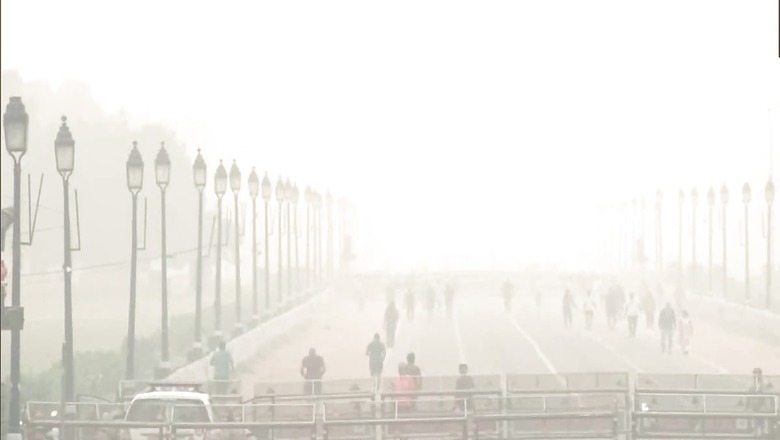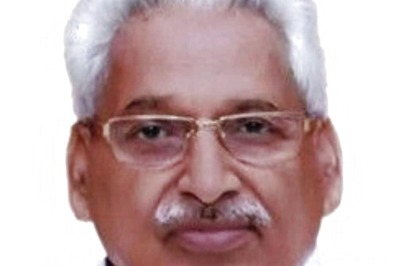
views
Investments required for air pollution mitigation are significant. Larger is the effect on countries and their economy due to elevated air pollution, with evident health effects. “To develop is to pollute” is a foregone conclusion, now it’s time that we plan to develop sustainably and direct our investments in green deals. Time is of essence, especially to people in more than 70 per cent of our cities who are exposed to poor air quality consistently, 2020 being a slight exception.
In 2020, Covid-19 pandemic forced the government to put a hold on all activities related to transport, industries, construction, and several other anthropogenic pursuits responsible for air pollution. The air was relatively cleaner and sky clearer, until the unlock phase was announced, which took away a small yet gratifying time for citizens of India. However, despite improvements during the lockdown, air quality in a city like Delhi remained way below the desired national standards and WHO guidelines.
The lockdown did something what we failed to achieve. There was a reduction of 42-55 per cent in PM2.5 concentration in Delhi, Kolkata and Chennai during March 25-May 31, 2020 when compared to the same period in 2019. The unlock phase which kicked off from June 1 started diluting the effect of lockdown on air quality. Pollution reached higher levels in 2020 (with respect to 2019) from as early as September in Delhi, from November in Kolkata and similar levels were recorded in Chennai in December. Yet again, with enhanced agricultural burning in 2020, North India was covered with a thick blanket of pollution in 2020; open fires detected were only second to 2016 levels. Punjab alone registered an estimated 44 per cent increase in the number of crop-burning incidents against last year, despite a ban on the activity. The pollution levels in the post-monsoon season again soared in Delhi, with air pollutants crossing the emergency levels multiple times in November.
Despite the gloomy-looking scenario vis-a-vis air quality in Delhi and in several other places in India, it is not a hopeless situation. India has taken some strong steps to curb and mitigate air pollution. The National Clean Air Programme (NCAP), a Rs 4,400 crore initiative, directs 122 non-attainment cities to cut pollution levels by 20-30 per cent before the end of 2024. The NCAP’s activities include finding out the source of pollution in all the identified cities, preparing an action plan detailing how to build capacity, and achieving clean air. Besides this, the central government has formed the Commission for Air Quality Management (CAQM) with adjoining states of Delhi. The CAQM will supersede all existing bodies in matters of air pollution mitigation. Along with city-level measures, the interventions of advanced BS-VI norms in the transport sector and LPG penetration in residential sector are measures which can gradually lead to air quality improvement at a regional level.
ALSO READ| How Air Pollution is Exacerbating Covid-19 Risk and Related Outcomes
Now that several policies and a commission are in place, all that is left is a need to reanalyze, revamp, and reinforce specific strategies to control pollution in the short to long-term. A.S.T.R.A (which in Hindi means a weapon aimed at a distant target) represents the actions that can get rid of pollution and make the air breathable. In this context, we suggest this:
1. Avoid: Avoidance is a pivotal step to reduce individual- and community-level activities leading to emissions. Post-Covid circumstances have demonstrated that work-from-home options can be implemented without impacting work efficiency and economic goals. There is a need to identify similar activities through which non-essential travel demands can be reduced. It may also call for structural changes in our employment patterns to ensure no losses in employment opportunities. Avoiding the use of non-essential products is another similar lesson to be learned.
2. Shift: There are several activities where avoidance may not be possible. However, there are always more sustainable and efficient options. In megacities, where personal vehicles merely crawl on congested roads and take almost the same or more time to reach the destination compared to public transport, a switch to the latter is a sensible choice. This change can lead to significant fuel and time savings and a reduction in emission loads. Towards this, safe, comfortable, reliable, and economical public transportation needs to be enhanced. Shifting to cleaner options like LPG instead of biomass to cook food is another sustainable way that requires a continuous push to overcome socio-economic barriers. Additionally, providing highly subsidized LPG cylinders to the poorest of poor for at least the winter months is essential to reduce emissions load in meteorologically adverse conditions. A shift from traditional solid fuels to cleaner fuels in the industrial sector is another viable option.
3. Technology: The use of new, more efficient and clean technologies is a must and needs faster adoption. Tailpipe technological control in industries, DG-set controls, vehicular inspection improvement, electric vehicle adoption, controls on evaporative emissions, and zig-zag brick kilns can reduce emissions load and enhance fuel efficiency and economic gains. Capital investments for most of these are recoverable through reasonable paybacks.
4. Research: We need to prioritize research, leading us on to the most sustainable paths to achieve our objectives. Research is the umbrella under which the themes of ‘Avoid’, ‘Shift’ and ‘Technology’ reside. Research can identify and pin-point the source of the problem and provide the most optimal options for control. We will need more significant research to guide implementation pathways and help track progress towards better air quality standards.
5. Awareness: The importance of awareness cannot be overemphasized. Without awareness, the contribution to pollution at an individual level cannot be curtailed. An aware and sensitized person can significantly reduce their carbon footprint by changing their lifestyle. Merely holding awareness workshops may not help; large scale behavioural-change programmes need to be launched for effective change. Only citizens who are aware can demand the right to clean and breathable air in India. With everything in right place, we just have to look out for actions in the right direction with constant vigilance from citizens and authorities alike.
The lockdown has provided us with an opportunity in disguise to reassess our activity patterns. It would be essential to use ASTRA as a weapon to eliminate the devil masked as air pollution.
Read all the Latest News, Breaking News and Afghanistan News here


















Comments
0 comment